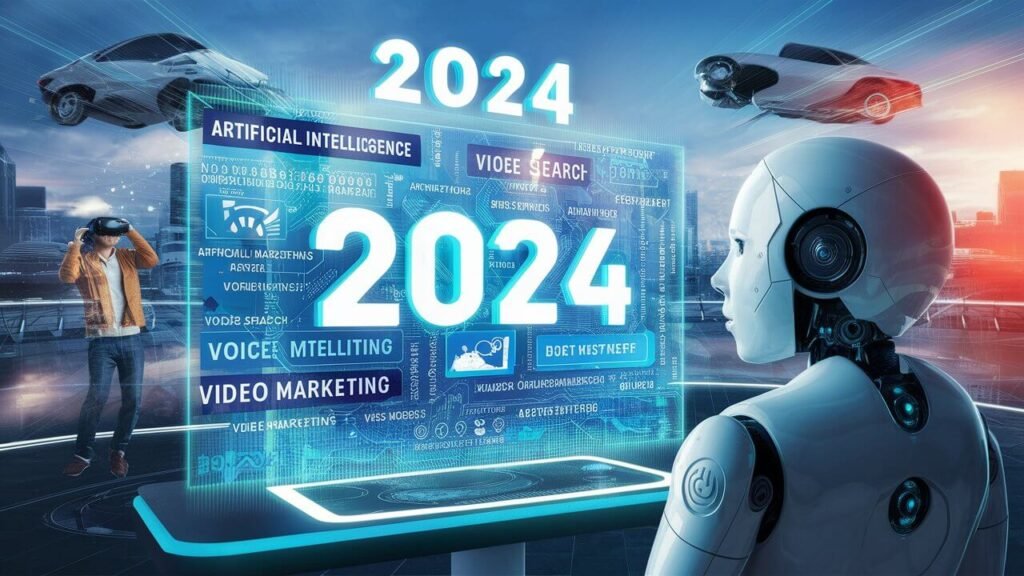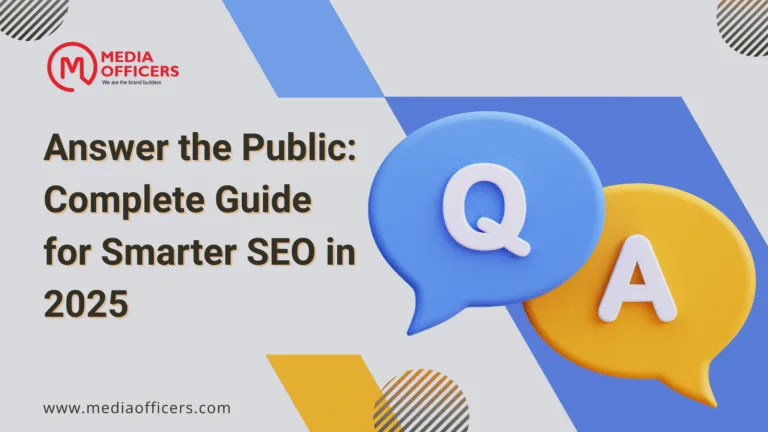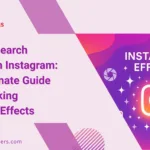|
Getting your Trinity Audio player ready... |
1. Introduction
1.1 Definition of SEO
Search Engine Optimization (SEO) refers to the practice of enhancing a website’s visibility on search engine results pages (SERPs). This involves various strategies and techniques aimed at increasing organic (non-paid) traffic to a site by improving its ranking for relevant search queries.
1.2 Importance of Staying Updated with SEO Trends 2024
The digital landscape is ever-evolving, and SEO is no exception. To remain competitive, businesses must stay abreast of the latest SEO trends 2024. Understanding and implementing these trends is crucial for maintaining high search rankings, driving organic traffic, and ultimately achieving business success.
1.3 Overview of Key Seo Trends in 2024
In 2024, several significant trends are shaping the SEO landscape. These include advancements in AI and machine learning, a continued emphasis on content quality, technical SEO enhancements, local SEO strategies, and the growing importance of user experience. By adapting to these trends, businesses can navigate the evolving digital landscape effectively.

2. AI and Machine Learning: The New SEO Frontier
2.1 AI-Generated Content
2.1.1 Benefits of AI-Generated Content
AI-generated content has become a powerful tool in the SEO arsenal. It enables businesses to produce large volumes of content quickly and efficiently. AI can analyze vast amounts of data to identify trending topics, optimize keyword usage, and even generate complete articles or blog posts. This can significantly reduce the time and effort required for content creation.
2.1.2 Limitations and Ethical Considerations
However, AI-generated content is not without its limitations. While it can mimic human writing, it often lacks the nuance, creativity, and authenticity that human writers bring. Ethical considerations also arise, as reliance on AI-generated content can lead to issues with originality and intellectual property. It’s crucial to use AI as a supplement to human creativity rather than a replacement.
2.2 Search Engine Algorithms
2.2.1 How AI Influences Search Algorithms
Search engines increasingly rely on AI and machine learning to refine their algorithms. These technologies help search engines better understand user intent, context, and the quality of content. As a result, search results are becoming more relevant and personalized, improving the overall user experience.
2.2.2 Impact on Search Intent Understanding
AI-driven algorithms can analyze user behavior and search patterns to predict what users are looking for. This means that content creators must focus on producing high-quality, informative, and valuable content that directly addresses user queries. Understanding search intent and creating content that satisfies it is paramount for achieving high rankings.
2.3 Enhanced User Experience
2.3.1 Analyzing User Behavior with AI
AI tools can analyze user behavior on websites, providing insights into how users interact with content. This includes tracking metrics such as click-through rates, time spent on page, and conversion rates. These insights enable businesses to optimize their websites for better user engagement and satisfaction.
2.3.2 Optimizing Website Experiences
Using AI to enhance user experience involves personalizing content, improving navigation, and ensuring fast loading times. Websites that offer seamless, intuitive experiences are more likely to retain users and achieve higher search rankings. Optimizing website experiences through AI is a crucial seo trend in 2024.
3. Content is King (But Quality Reigns Supreme)
3.1 Focus on User Intent
3.1.1 Understanding and Addressing User Queries
Creating content that directly addresses user queries and needs is paramount. This involves conducting thorough keyword research and understanding the questions and concerns of your target audience. By aligning content with user intent, businesses can produce content that resonates and ranks well.
3.1.2 Strategies for Creating Intent-Focused Content
To create intent-focused content, start by identifying the main questions your audience is asking. Use tools like Google’s People Also Ask and AnswerThePublic to gather insights. Structure your content to provide clear, concise answers, and use relevant keywords naturally throughout your text.
3.2 E-A-T (Expertise, Authoritativeness, Trustworthiness)
3.2.1 Importance of E-A-T in Content Creation
Google places a strong emphasis on E-A-T (Expertise, Authoritativeness, Trustworthiness) in its ranking algorithms. Content that demonstrates expertise, comes from authoritative sources, and is trustworthy is more likely to rank highly. Ensuring your content meets these criteria is essential for SEO success.
3.2.2 Ensuring Credibility and Accuracy
To enhance E-A-T, ensure your content is well-researched, accurate, and cites credible sources. Use expert authors and include author bios to establish authority. Regularly update your content to maintain its relevance and accuracy.
3.3 Long-Form Content
3.3.1 Advantages of Comprehensive Content
Long-form content often performs better in search rankings because it provides in-depth information on a topic. Comprehensive articles can cover multiple aspects of a subject, offering more value to readers and increasing the likelihood of satisfying search intent.
3.3.2 Balancing Length and Quality
While long-form content is beneficial, it’s important to maintain quality and relevance. Avoid filler content and focus on providing valuable insights. Use headings, subheadings, and multimedia elements to break up the text and enhance readability.
3.4 Visual Content
3.4.1 Role of Videos, Images, and Infographics
Visual content, including videos, images, and infographics, can enhance user experience and improve SEO. Visuals make content more engaging and can help explain complex topics more effectively. They also increase the time users spend on your site, which can positively impact rankings.
3.4.2 Optimization Techniques for Visual Content
To optimize visual content, use relevant keywords in file names, alt text, and descriptions. Ensure images and videos are high quality and properly compressed to avoid slow loading times. Embedding videos and using infographics can also drive traffic and improve SEO performance.
4. Technical SEO: The Backbone of Your Website
4.1 Core Web Vitals
4.1.1 Importance of Loading Times, Responsiveness, and Stability
Google’s Core Web Vitals focus on three main aspects: loading times, interactivity, and visual stability. Websites that perform well in these areas are rewarded with higher rankings. Ensuring your site meets these standards is critical for technical SEO.
4.1.2 Techniques to Meet Core Web Vitals Standards
Optimize images, leverage browser caching, and minimize JavaScript to improve loading times. Ensure your website is responsive across all devices and test for visual stability to prevent layout shifts. Regularly audit your site to address any issues that may arise.
4.2 Mobile-First Indexing
4.2.1 Google’s Mobile-First Indexing Approach
Google now primarily uses the mobile version of a website for indexing and ranking. This shift reflects the growing number of users accessing the internet via mobile devices. Ensuring your site is fully optimized for mobile is essential for SEO success.
4.2.2 Steps to Optimize for Mobile Devices
To optimize for mobile, use a responsive design that adapts to various screen sizes. Simplify navigation, use larger fonts, and ensure buttons are easy to tap. Test your site on different devices and use tools like Google’s Mobile-Friendly Test to identify areas for improvement.
4.3 Structured Data
4.3.1 Benefits of Implementing Structured Data
Structured data helps search engines understand the content of your website better. By using schema markup, you can provide detailed information about your content, which can lead to rich snippets in search results and improve click-through rates.
4.3.2 Impact on Search Results and Rich Snippets
Rich snippets enhance search results by displaying additional information such as ratings, prices, and images. Implementing structured data can improve visibility and attract more clicks. Use tools like Google’s Structured Data Markup Helper to add schema markup to your site.
5. Local SEO: Connecting with Your Community
5.1 Google Business Profile
5.1.1 Optimizing Your Google Business Profile
A well-optimized Google Business Profile can significantly boost local SEO. Ensure your profile is complete with accurate information, including business hours, address, and contact details. Add high-quality images and encourage satisfied customers to leave positive reviews.
5.1.2 Importance of Accurate Information and Positive Reviews
Accurate information and positive reviews build trust with potential customers and improve your local search rankings. Regularly update your profile to reflect any changes in your business and respond to reviews to engage with your audience.
5.2 Local Citations
5.2.1 Building a Strong Online Presence
Local citations are mentions of your business on other websites, such as directories and review sites. Building a strong online presence through local citations can improve your local SEO and help potential customers find your business.
5.2.2 Managing Business Listings Across Directories
Ensure your business listings are consistent and accurate across all directories. Use tools like Moz Local to manage your listings and correct any discrepancies. Consistency helps build trust with search engines and improves your local search rankings.
5.3 Voice Search Optimization
5.3.1 Adapting Content for Voice Search
Voice search is becoming increasingly popular, and optimizing your content for voice queries is essential. Focus on using natural language and long-tail keywords that reflect how people speak.
5.3.2 Using Natural Language and Long-Tail Keywords
When optimizing for voice search, consider the questions your audience might ask and structure your content to provide clear, concise answers. Use conversational language and long-tail keywords to capture voice search queries effectively.
6. Other Notable Trends
6.1 Video SEO
6.1.1 Importance of Video Content
Video content is gaining traction and can significantly enhance your SEO efforts. Videos are highly engaging and can help explain complex topics more effectively than text alone. They also increase the time users spend on your site, which can improve your search rankings.
6.1.2 Optimization Strategies for Video SEO
To optimize your videos, use relevant keywords in titles, descriptions, and tags. Create engaging thumbnails and transcribe your videos to make them more accessible. Embed videos on your site and promote them across various platforms to drive traffic.
6.2 User Experience (UX)
6.2.1 Enhancing User Experience for SEO Success
A positive user experience is crucial for SEO success. Search engines prioritize websites that offer seamless, intuitive experiences. Ensuring your site is easy to navigate, loads quickly, and provides valuable content can significantly boost your rankings.
6.2.2 Tips for Improving Website Navigation and Speed
Simplify your website’s navigation to make it easy for users to find what they’re looking for. Use clear calls to action and minimize clutter. Optimize images and use caching to improve loading times. Regularly test your site’s performance and make necessary adjustments.
6.3 Social Media
6.3.1 Indirect Impact of Social Signals on SEO
While social signals may not directly impact search rankings, they can influence SEO by driving traffic and increasing brand awareness. Engaging with your audience on social media can lead to more shares, likes, and backlinks, which can indirectly improve your SEO performance.
6.3.2 Strategies for Leveraging Social Media
To leverage social media for SEO, create shareable content and encourage your audience to engage with it. Use social media platforms to promote your content and build a community around your brand. Monitor your social media metrics to understand what resonates with your audience and adjust your strategy accordingly.
7. Actionable Steps
7.1 Conducting an SEO Audit
7.1.1 Identifying Areas for Improvement
Conducting an SEO audit helps identify areas where your website can be improved. This involves analyzing various aspects of your site, including content, technical SEO, and user experience. Use tools like Google Analytics and SEMrush to gather data and identify areas for enhancement.
7.1.2 Tools and Techniques for Effective SEO Audits
Effective SEO audits require a combination of tools and techniques. Use site crawlers to identify technical issues, analyze keyword performance, and evaluate backlinks. Regularly audit your site to ensure it aligns with current SEO best practices and trends.
7.2 Developing a Content Strategy
7.2.1 Aligning Content with Target Audience and Business Goals
Developing a content strategy involves aligning your content with your target audience and business goals. Conduct audience research to understand their needs and preferences. Create a content calendar that outlines what topics you’ll cover and when, ensuring your content remains relevant and engaging.
7.2.2 Creating a Content Calendar and Workflow
A content calendar helps you plan and organize your content production. It ensures consistency and allows you to strategically publish content that aligns with your SEO goals. Establish a workflow that includes content creation, editing, and promotion to streamline the process.
7.3 Optimizing for Technical SEO
7.3.1 Key Technical SEO Factors to Consider
Key technical SEO factors include site speed, mobile-friendliness, and structured data. Ensure your website loads quickly, is easy to navigate on mobile devices, and uses schema markup to enhance search engine understanding.
7.3.2 Implementing Technical SEO Best Practices
Implement technical SEO best practices by regularly auditing your site, fixing any technical issues, and staying updated with the latest trends. Use tools like Google Search Console to monitor your site’s performance and identify areas for improvement.
7.4 Investing in Local SEO
7.4.1 Importance of Local SEO for Physical Locations
Local SEO is crucial for businesses with physical locations. It helps you connect with local customers and improve your visibility in local search results. Optimize your Google Business Profile and ensure your business information is accurate and consistent across all directories.
7.4.2 Steps to Improve Local SEO Presence
To improve your local SEO presence, focus on building local citations, managing online reviews, and optimizing your website for local search queries. Engage with your local community through events and partnerships to enhance your local presence.
7.5 Monitoring and Analyzing SEO Performance
7.5.1 Tracking Progress and Making Adjustments
Monitoring your SEO performance is essential for tracking progress and making necessary adjustments. Use analytics tools to track key metrics such as organic traffic, keyword rankings, and conversion rates. Regularly review your data to identify trends and areas for improvement.
7.5.2 Tools for SEO Performance Analysis
Several tools are available for SEO performance analysis, including Google Analytics, SEMrush, and Moz. These tools provide insights into your site’s performance, helping you identify strengths and weaknesses. Use these insights to refine your SEO strategy and achieve better results.
8. Conclusion
8.1 Summary of Key Points
Staying informed about the latest SEO trends and implementing best practices is crucial for maintaining and improving your website’s visibility. Key trends for 2024 include leveraging AI and machine learning, focusing on user intent and E-A-T, optimizing for Core Web Vitals, and enhancing user experience.
8.2 Call to Action for Further Education
To stay ahead in the ever-evolving digital landscape, continuously educate yourself on SEO trends and best practices. Implement the actionable steps outlined in this article to improve your SEO strategy and achieve your business objectives.
8.3 Additional Resources
For further reading and resources, consider exploring the following:
By staying updated and proactive, you can navigate the evolving digital landscape and ensure your website remains competitive in 2024 and beyond.







